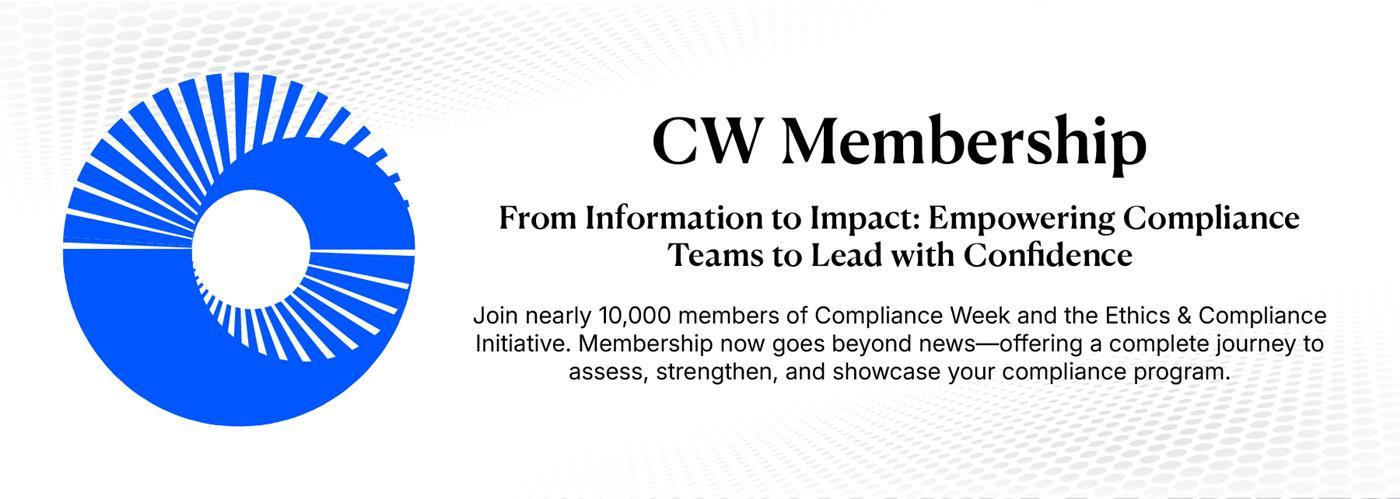- Home
-
News
- Back to parent navigation item
- News
- National Compliance Officer Day 2025
- Accounting & Auditing
- AI
- AML
- Anti-Bribery
- Best Practices
- Boards & Shareholders
- Cryptocurrency and Digital Assets
- Culture
- ESG/Social Responsibility
- Ethics & Culture
- Europe
- Financial Services
- Internal Controls
- Regulatory Enforcement
- Regulatory Policy
- Risk Management
- Sanctions
- Surveys & Benchmarking
- Supply Chain
- Third Party Risk
- Whistleblowers
- Opinion
- Benchmarking
- Certification
- Events
- Research
- Awards
-
CW Connect
- Back to parent navigation item
- CW Connect
- Sign In
- Apply
- Membership
Q&A: Five questions with a TPRM specialist
By Compliance Week2019-01-07T14:49:00

Abercrombie & Fitch Senior Compliance Counsel Rob Seibel, a specialist when it comes to the implementation of a third-party risk management program, discusses trends and challenges around managing risks with third parties.
THIS IS MEMBERS-ONLY CONTENT
You are not logged in and do not have access to members-only content.
If you are already a registered user or a member, SIGN IN now.
Related articles
-
 Article
ArticleCCO Q&A: Managing compliance in the FinTech space
2020-02-26T15:35:00Z By Jaclyn Jaeger
Compliance Week discusses with Shannon Duncan, CCO and director of operations at registered investment adviser Blooom, the many unique challenges of doing compliance in the complex, ever-evolving FinTech space.
-
 Article
ArticleL’Oréal Q&A: Becoming the ‘most ethical company in the world’
2019-12-17T16:27:00Z By Jaclyn Jaeger
L’Oréal’s Chief Ethics Officer Emmanuel Lulin shares with Compliance Week how the 110-year-old consumer goods company is working toward its lofty ambition of becoming “the most ethical company in the world.”
-
 Article
ArticleWhy continuous monitoring is crucial for TPRM
2019-01-07T21:18:00Z By Tom Fox
Three cautionary tales demonstrate the potential trouble a company can find itself in when third parties are not actively monitored.
More from Opinion
-
 Opinion
OpinionWhat the Copilot Usage Report 2025 Means for Corporate Compliance
2025-12-18T18:48:00Z By Tom Fox
Microsoft’s Copilot Usage Report 2025 offers compliance professionals a rare, data-driven look at how artificial intelligence is actually being used by millions of people, rather than how organizations assume it is being used.
-
 Opinion
OpinionEmerging antitrust risks in the expanded use of AI
2025-12-16T19:24:00Z By Lee F. Berger and Robert Klotz, CW guest columnists
Concerns over competitors using AI pricing tools to fix prices have dominated antitrust discussions in the U.S. and EU. Recent cases show how algorithmic pricing might enable unlawful coordination.
-
 Opinion
OpinionHow to make the business case to upgrade records management systems
2025-12-10T15:29:00Z By Mark Diamond, CW guest columnist
Companies are giving their records management programs a makeover, and not for the reasons you may think. What used to be a sleepy back-office legal department function is now front and center, often driven by compliance teams. Organizations are discovering that a “save everything, forever” de facto policy doesn’t ...
- Terms and Conditions
- Privacy Policy
- Do Not Sell My Info
- © 2025 Compliance Week
Site powered by Webvision Cloud






